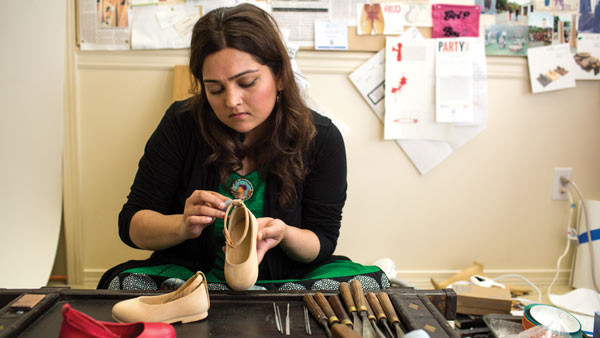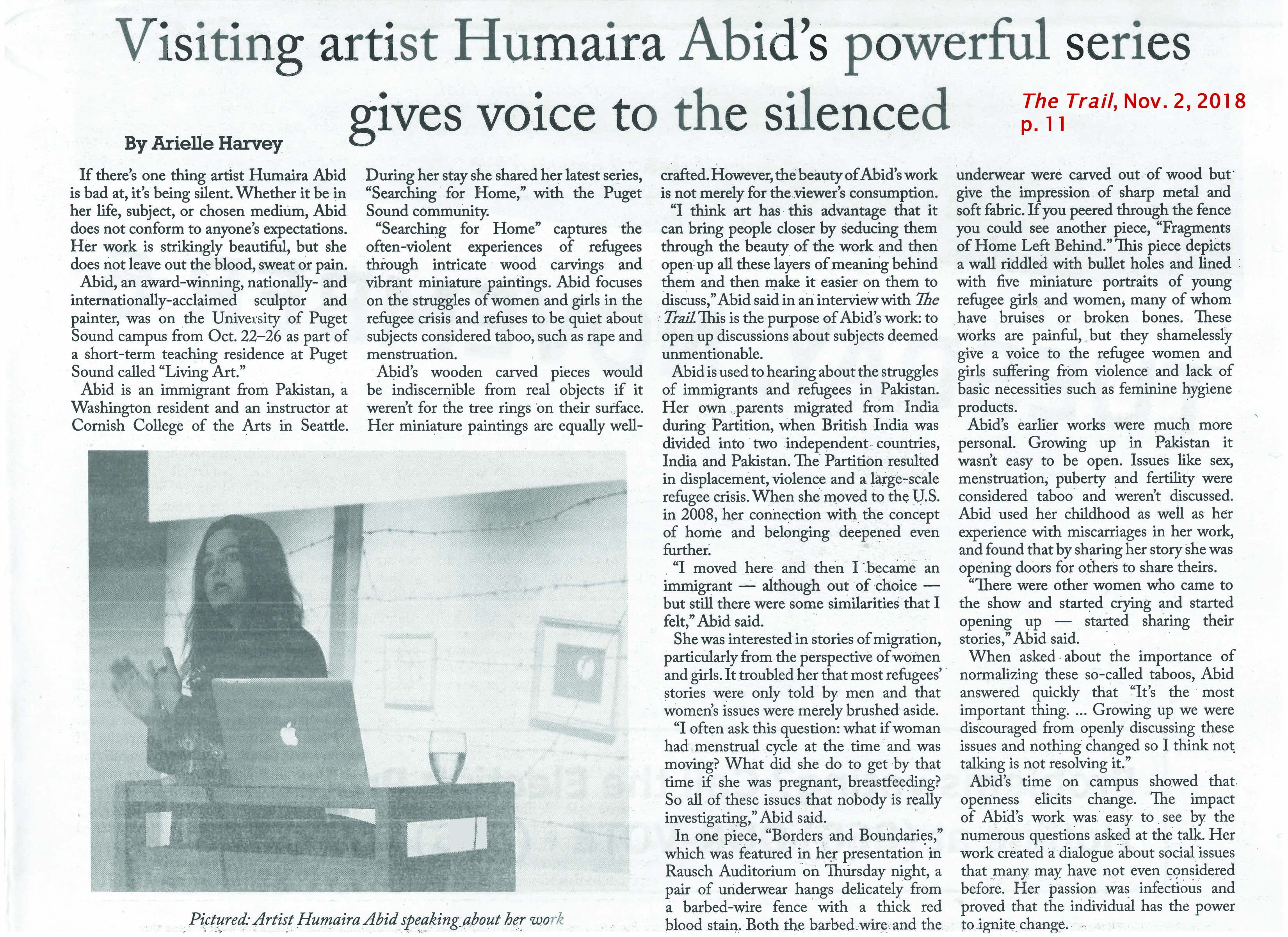Local sculptor, Humaira Abid participated in a week-long residency in our department in October 2018. Abid grew up and was educated in Pakistan, where she earned her BFA with honors at the National College of Arts in Lahore, Pakistan. Abid lives in the greater Seattle metropolitan area and serves as an instructor at the Cornish College of the Arts in Seattle. During her residency, Abid visited eight classes which included Studio Art, Art History, and Gender and Queer Studies courses; engaged in an interview featured in The Trail [see image below], gave a public lecture on her most recent body of work, conducted more than a dozen individual critiques with students, and more.
Abid’s work engages with themes of immigration as well as important women’s issues (such as miscarriage, violence against women and girls, motherhood, and taboos around the female body). She is greatly committed to asking questions and drawing attention to subjects that are rarely discussed. The Department of Art and Art History timed her visit to campus in order to continue engagement with a vital thread of the Race and Pedagogy National Conference held on our campus in September 2018, namely the topic of immigration.

Fragments of Home Left Behind, plaster-treated wall and framed miniature portraits, installation shot from Searching for Home, Bellevue Art Museum, 2017-2018
Students found Abid’s visit intellectually stimulating and transformational, as they explain below.
Elayna Caron, studio art major explains that an individual critique with Abid impacted her work significantly: “I found it incredibly stimulating to have a fresh set of eyes on my work and Humaira was able to connect with me after just a few moments of seeing my work. Meeting with her has helped me solidify my ideas for my senior thesis. She gave critical feedback and has helped me immensely to move forward with my art. I am so thankful to have had the opportunity to get feedback from her and our conversation has totally changed the direction of my art.” Another studio art major, Ronda Peck observes that her “… experience with Humaira was very insightful and very inspiring.” Peck explains that: “When I talked with her one on one, she gave me nurturing and comforting advice on my work. She gave me ideas to make my work stronger and more meaningful. She said, ‘start a conversation about something.’ I asked her about her studio space and if she had any particular ritualistic behaviors or unique methods on how she approaches her work. She commented that her studio is a ‘comfortable space’” where she can both work and relax.
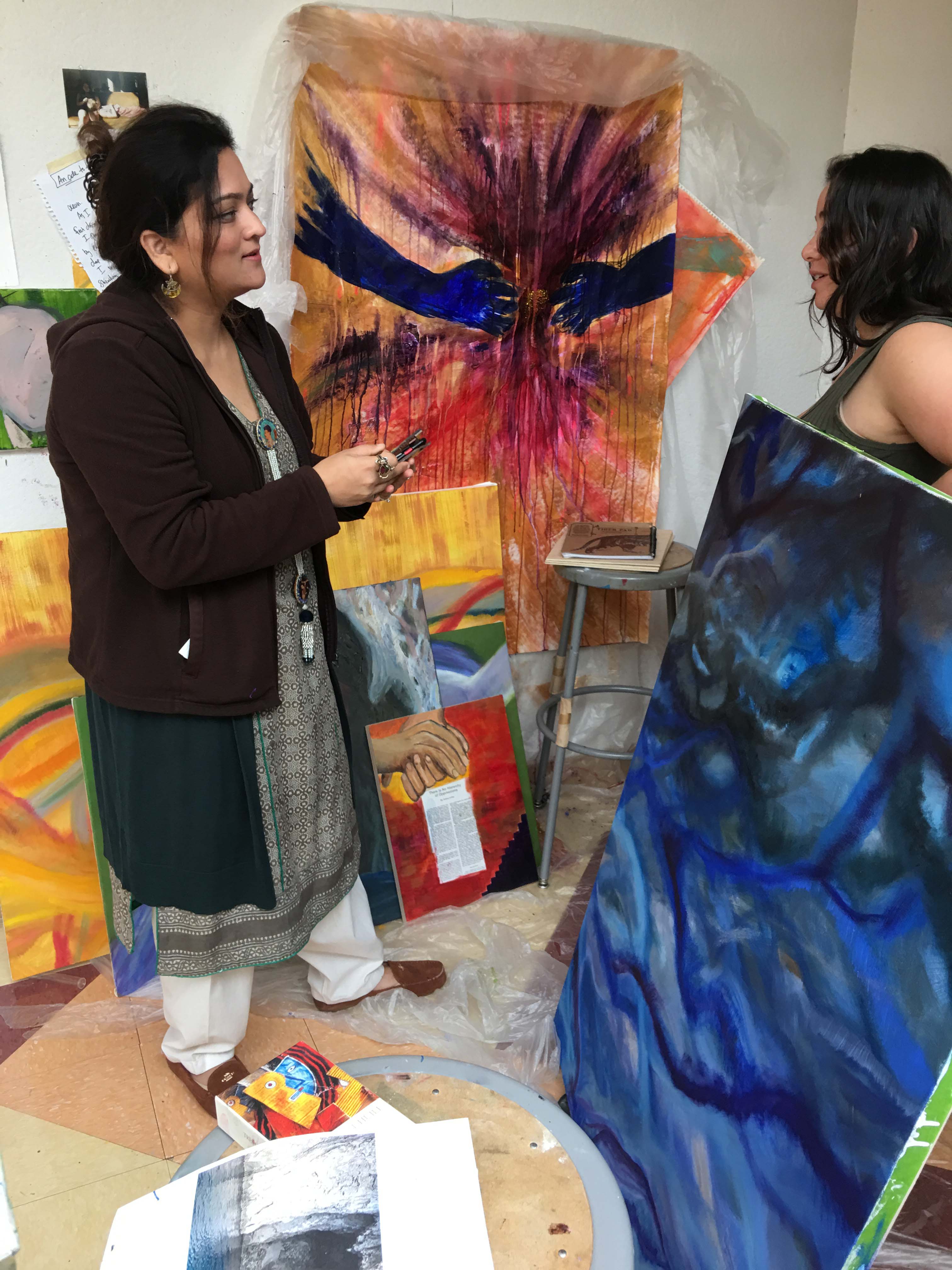
Engaging in individual critiques with senior studio art majors
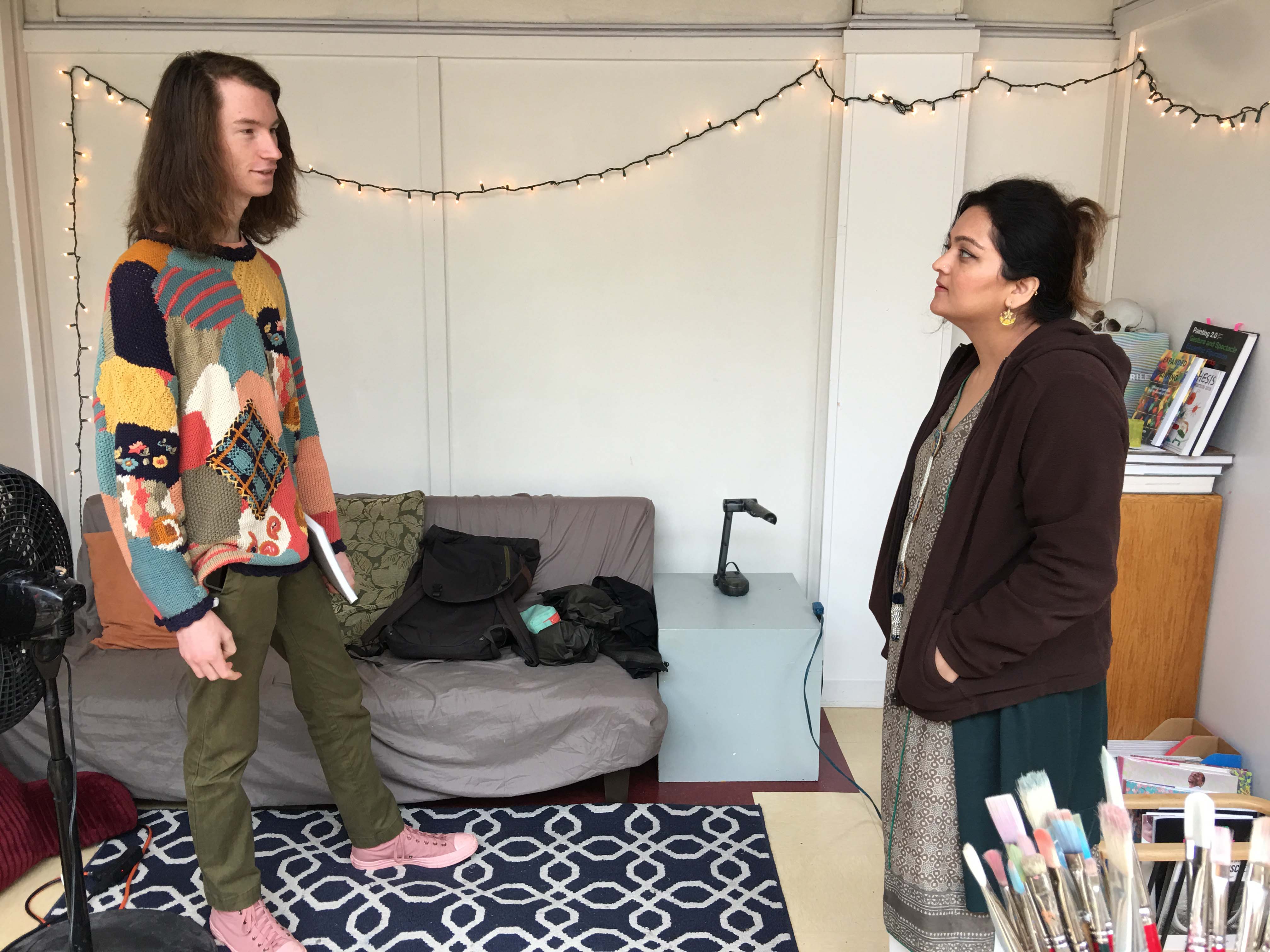
Engaging in individual critiques with senior studio art majors
Art history major Sarah Johnson noted that: “I feel very lucky to have had the chance to learn about her art and life experiences first-hand in her class presentation,” while another art history major, Mary Thompson, praised her participation in an art history course, “…the pieces she shared with the class pertained to other common themes in Abid’s work such as menstruation, puberty, and miscarriages, and exhibited her attention to detail in storytelling through her art, research as well as reflection, and extreme skill and passion for her work. I found it crucial to hear these stories of womanhood that are universal yet often taboo to discuss be told by a non-Western female artist. Abid’s presentation and artworks remind and emphasize that, though experienced on various levels of intensity, women’s issues are of concern everywhere and those stories must be shared.”
Ayse Hunt explained that Abid’s work resonated with her as a double major in art history and computer science particularly because computer science is such a male dominated field: “… it was clear that Abid is very interested in examining the societal pressures women face in different contexts, but particularly those related to the physicality of women’s experiences in the world. It was inspiring to hear Abid speak about how she recognized areas that were restricted to her because she was a woman, such as woodworking, and how she purposely set out to excel in those same areas.”
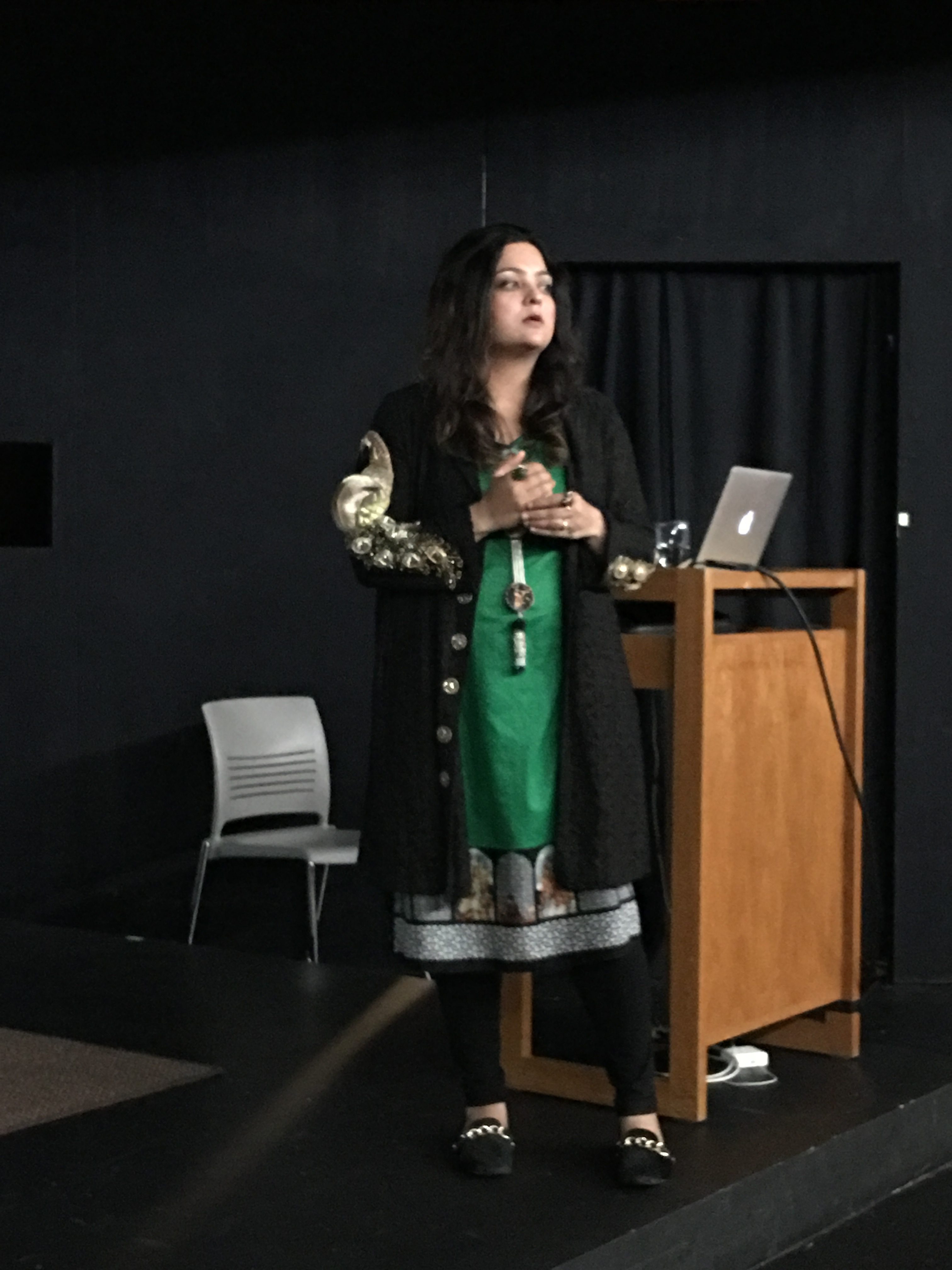
Public Lecture, University of Puget Sound
Clearly, Humaira Abid and her work have resonated strongly with students in our department. Yet, her residency enriched not only students but also members of the faculty and the Puget Sound community with deep exposure to the work of an acclaimed contemporary artist; her intensive residency offered ample opportunities to learn from an internationally renowned female artist who bridges the cultural divide between East and West.

